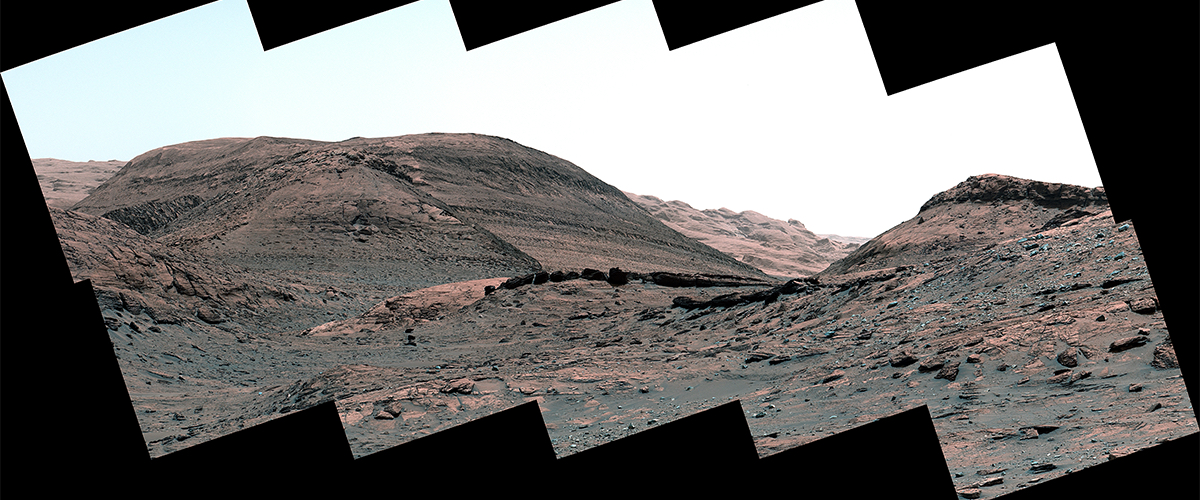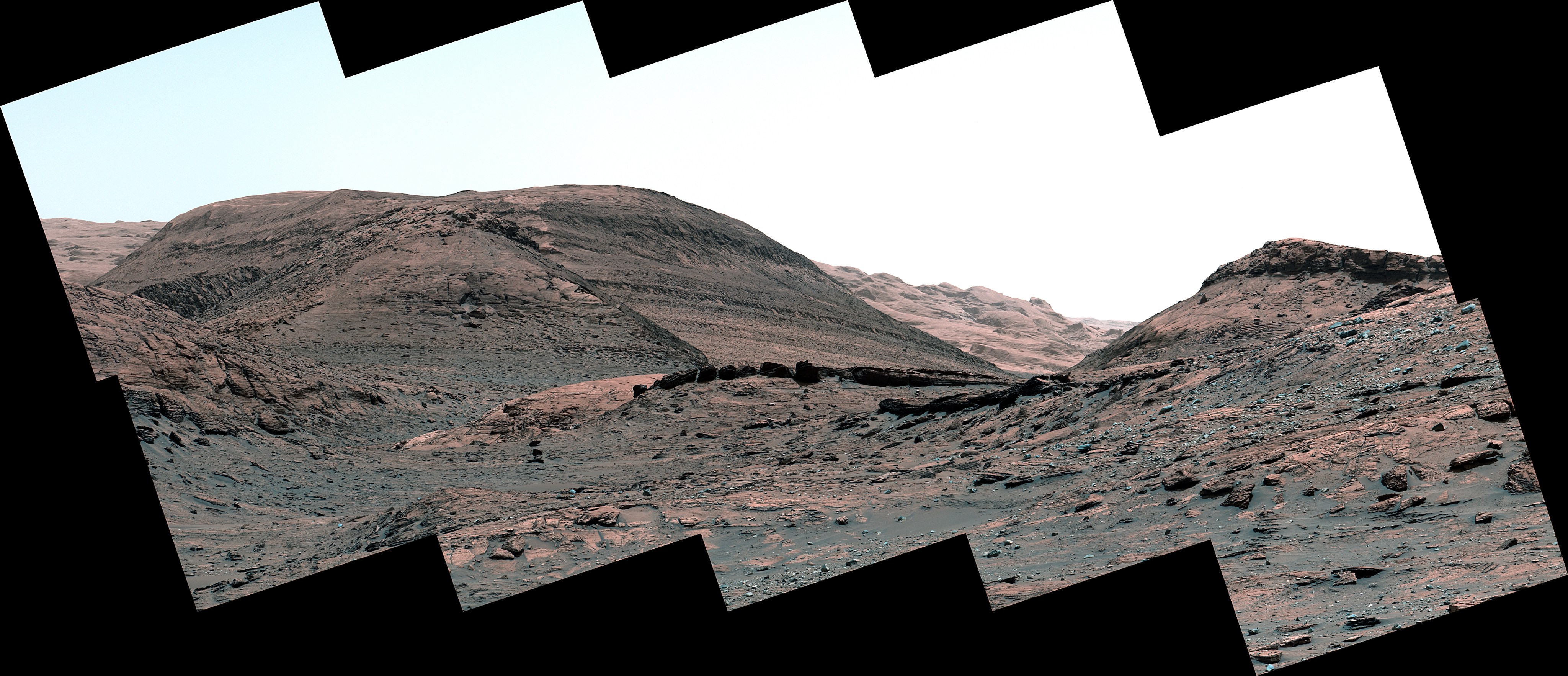Curiosity’s View of Sulfate-Bearing Region and Streambed Rocks

| Credit | NASA/JPL-Caltech/MSSS |
|---|---|
| Language |
|
NASA’s Curiosity Mars rover captured this view of a sulfate-bearing region ahead of its current location. Dark boulders near the center of the panorama are thought to have formed from sand deposited in ancient streams or ponds. Scattered gray rocks covering the hillside on the right are all that remain of a sandstone capping unit that once covered this area. This panorama is made up of 10 individual images that were captured by Curiosity’s Mast Camera, or Mastcam, on May 2, 2022, the 3,462nd Martian day, or sol, of the mission. The images were stitched together after they were sent back to Earth.
Behind the dark boulders – in the middle of the image – is a mountain that makes up part of the sulfate-bearing region; layers within this region can be seen as stripes across the mountainside. These layers represent an excellent record of how Mars’ water and climate changed over time.
Curiosity was built by NASA’s Jet Propulsion Laboratory in Southern California, which leads the mission on behalf of NASA’s Science Mission Directorate in Washington. Malin Space Science Systems in San Diego built and operates Mastcam.
For more about Curiosity, visit http://mars.nasa.gov/msl or https://www.nasa.gov/mission_pages/msl/index.html.

